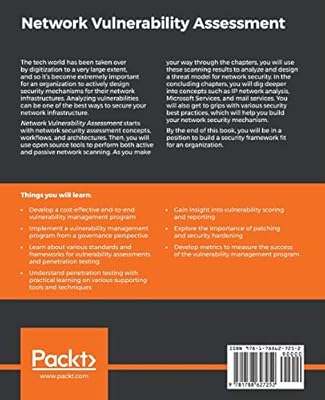The primary objective of network vulnerability evaluation is to lower the chance that cybercriminals will certainly locate the weaknesses in your network and also exploit them, hence triggering DDoS or taking your delicate information. Network vulnerability assessment is performed to ostensibly identify primary problems because of which the organization would not be able, as an example, to meet protection criteria (Medical insurance Portability and also Responsibility Act (HIPAA) if it concerns the health care sector, Payment Card Industry Data Protection Criterion (PCI DSS) if it worries banking as well as financing) and accomplish their organization procedures.
Vulnerability Assessment
The tasks of susceptability assessment are the following: Recognition, quantification and also ranking of vulnerabilities found in network facilities, software program and also equipment systems, applications, Describing the effects of a theoretical scenario of the discovered safety and security 'openings', Developing a strategy to tackle the found dangers, and Offering suggestions to enhance a company's security posture and also aid remove safety threats.
Vulnerability evaluation can be performed according to the white box, black box and gray box techniques. https://techhzo.bloggersdelight.dk/2021/08/26/ways-to-prevent-ransomware-attacks/The main task a cybersecurity group requires to do when doing is to imitate genuine hackers. According to this technique, the safety team looks for methods to get into the business's network 'from the exterior.' What can they see in this case? Public IP addresses, the external interface of a firewall program, systems located in the demilitarized area (DMZ), etc.

If the cybersecurity group is to carry out, they check out the network 'from the inside,' having all the benefits of the network accredited users. They can see the whole connect with its documents web servers, data sources. The safety designers have manager accessibility to all the web servers inside the network. Their objective is not simply to scan the network for vulnerabilities, however additionally check the protection of the setup of the devices inside the network.
A Step-by-step Guide To Vulnerability Assessment
Security designers perform grey box susceptability analysis if they obtain some information on the company's network, such as individual login details, but they do not get accessibility to the whole network. There are benefits and drawbacks in each technique. In a lot of organizations, there are extra interior resources than those seen 'from the exterior.' When executing network susceptability assessment by 'taking a look around from the within,' ethical hackers have a bigger scope for activity.
Vulnerability analysis is executed with automated scanning tools that provide the scanning results with the checklists of vulnerabilities, typically focused on by their severity. There are 2 kinds of susceptability evaluation devices (scanners) and also, which function nearly in the very same method. Both open source and also commercial susceptability assessment tools work with the basis of with control specifications, for the conformity with which the network is being evaluated.
The key points both sorts of network susceptability assessment devices vary from each various other are provided below: Open up resource vulnerability evaluation devices do not require licensing, unlike commercial ones. When purchasing a business scanning device, a susceptability analysis supplier pays for software, personnel training, along with for a permit.
What Is Vulnerability Assessment
For that reason, it's obvious that the expense of network vulnerability analysis services may climb enormously for a client that makes a decision to get such solutions done with industrial scanning tools. When the scanning is over, safety and security designers get reports having the found vulnerabilities. Commercial devices offer more interesting searchings for with less false-positives (the uncovered susceptabilities that do not actually exist).
Business tools are upgraded much more often than open resource ones. When the database of a scanning tool obtains updates, the most just recently uncovered safety and security vulnerabilities are included in it. An upgrading process of a scanning tool's database carried out routinely significantly improves the probability that the prospective vulnerabilities in the business's network will be recognized.
There's also an alternative for a scanning tool to be integrated as a right into a SIEM system. For example, IBM QRadar SIEM can be enhanced with the adhering to susceptability analysis components: Risk Manager, Vulnerability Manager and Incident Forensics, which makes it a multi-purpose remedy.
A Step-by-step Guide To Vulnerability Assessment
The cybersecurity team recognized the method organization procedures were performed in the company and also concurred with the consumer on the analysis purposes, the extent of job. The organization needed to spot safety concerns and perform remedial actions to end up being PCI DSS certified. So, the protection engineers were tasked with performing susceptability assessment for the organization's inner subnetworks.
Extra especially, the group defined whether the network had open ports or solutions that shouldn't be opened up, got the understanding of the software and vehicle drivers configurations, learnt whether the logs from the network services are sent to a protection information and also occasion management (SIEM) option. They additionally determined virtual as well as physical web servers, as well as the protection procedures that were currently in position, such as firewall softwares and breach discovery as well as avoidance systems (IPS/IDS).
It enabled to find the web server version, inspect the web servers to ensure that their ports are running appropriately, ping network segments. Therefore, the protection group scanned target subnetworks to fingerprint running services and operating systems. For that, they sent out demands to the hosts (computers or virtual equipments) being scanned and evaluated their responses.